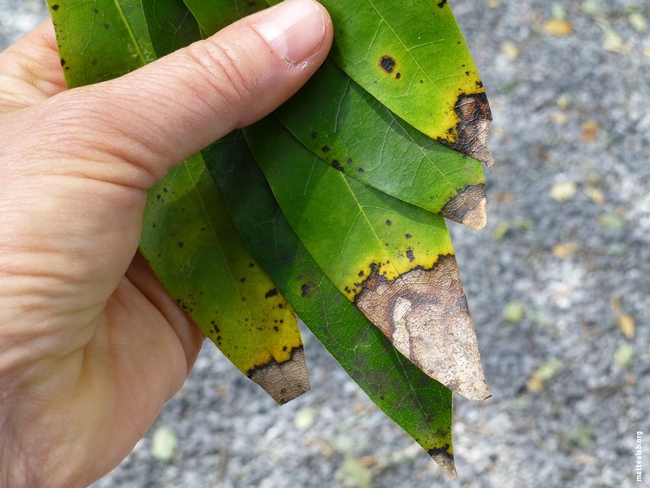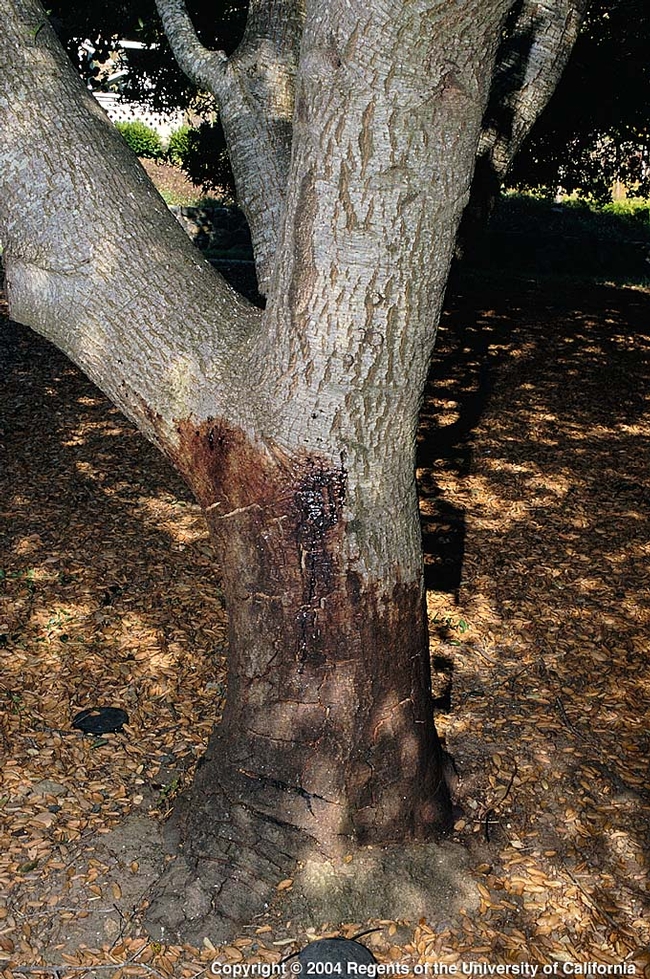
Posts Tagged: bianchi
High interest in SOD spread to San Luis Obispo County
Central Coast residents, officials, ranchers and representatives of conservation organizations came out in force to a November UC Cooperative Extension meeting sounding an alarm about the recent detection of Sudden Oak Death (SOD) in San Luis Obispo County trees, reported Kathe Tanner in the San Luis Obispo Tribune.
This was the first such gathering in this county since tests confirmed that the disease made its way south of Monterey County, according to event coordinator Mary Bianchi, director of UC Cooperative Extension in SLO County. But there will be more meetings to come, she said.
Previously confirmed infestations of the disease stayed north of the Monterey County border with San Luis Obispo County. Because SOD spreads by wind and rain, experts believe the prolonged California drought inhibited the spread further south. However, recent tests confirmed the SOD pathogen, phytophthora ramorum, on oaks along the parking lot at Salmon Creek, and in bay laurel trees along Santa Rosa Creek Road, west of Atascadero near Highway 41 and along Stenner Creek and Prefumo Canyon in San Luis Obispo.
Another intensive survey to be conducted by foresters and volunteer citizen scientists in the spring will include Cambria neighborhoods, ranches and other areas. In the meantime, residents were asked to keep an eye out for SOD symptoms in local bay laurel and oak trees. SOD lesions show up as pixilated brown, black or gray areas on leaf tips. Oozing cankers on an oak tree, with sap coming out of the trunk but with no wound evident on the bark, is another sign that the trees could be infected with the pathogen that causes SOD.
UC ANR to help growers comply with new food safety rules
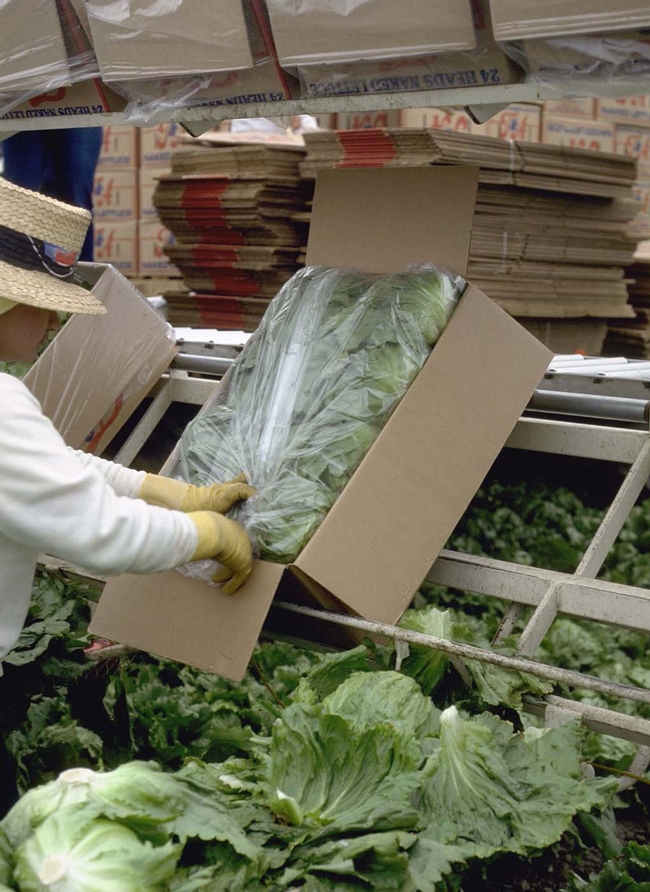
Hillman spoke to Mary Bianchi, the director of UC ANR Cooperative Extension in San Luis Obispo County. She said most growers already have many components the act requires, such as their nutrient management plan and their irrigation plan.
"It's a matter of understanding what additional information they might need to be documenting on an ongoing basis and putting all the information together in one place," Bianchi said.
The FDA's Food Safety Modernization Act will likely require producers to take part in eight hours of continuing education on food safety, so UC ANR is making plans to offer the training.
"The Produce Safety Alliance from Cornell has worked with many extension people across the country to draft a curriculum that includes information we consider to be important for growers across the United States," Bianchi said. "That needs to be adapted for our growers here in California, of course, and we'll work with that information and hopefully with other agricultural organizations to make sure that our growers have access to the education that they need to comply."
Rain helps rangeland trees and grasses begin recovery
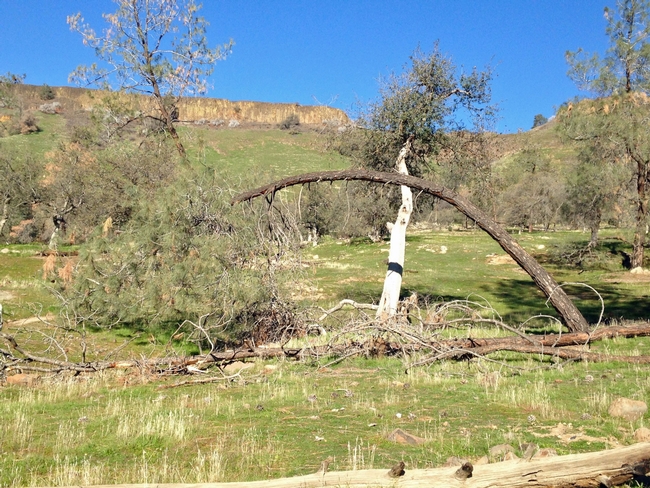
“Water stress renders oak trees more likely to express early leaf browning and to be more susceptible to damage from native and introduced tree pests and diseases,” said Bill Tietje, UC Cooperative Extension natural resources specialist. “One or more of these (drought years) could be the last straw for an already stressed tree.”
Recent rain has helped, but trees on shallow soil or on warm, south-facing hillsides are especially vulnerable.
“We are getting many reports of trees that are on the way out or are dead,” Tietje said. “The drought is certainly weakening many trees, and those that are old or have oak worm are dying.”
The Tribune reported that stressed valley oaks have a tendency to drop limbs or for the whole tree to drop, according to a report by Mary Bianchi, UCCE advisor and director in San Luis Obispo County. This happens because the tree closes its pores to conserve water while its roots continue to soak up what water they can.
“This causes water to build up in the trunk and limbs,” Bianchi wrote. “Apparently, the extra weight can cause limbs and maybe the whole tree to break, by some reports as though the tree exploded.”
Rangeland grasses are greening the foothills
The grassy surface of rangeland is faring better, reported the Modesto Bee. Abundant rain in December brought new growth to rangeland that has suffered badly in three years of drought.
“This December has been great for growing grass, lots of moisture and warm temperatures,” said an email from Theresa Becchetti, a UCCE livestock and natural resources advisor in Stanislaus County. “I'm not counting any chickens before they hatch, though.”
Humboldt County voters to weigh in on GMOs
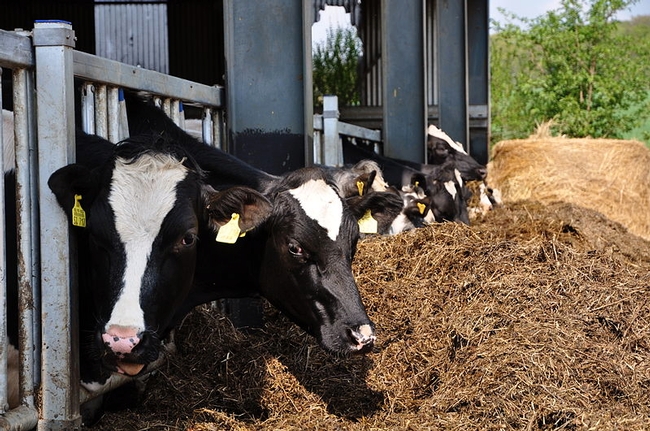
Alison Van Eenennaam, UCCE specialist in the Department of Animal Science at UC Davis, said there are thousands of scientific studies that have shown that GMOs are not dangerous. Van Eenannaam herself published a review in September that examined 30 years of livestock-feeding studies that represent more than 100 billion animals. She concluded that the performance and health of food-producing animals consuming genetically engineered feed has been comparable to that of animals consuming non-GE feed.
Van Eenennaam cautioned the North Coast Journal reporter that "you can't just say 'GE is safe.'"
"That's too broad," she said. "That's like saying 'electricity is safe.' People who've been in the electric chair would disagree."
One can't say that traditional breeding is "safe," either. People have been breeding organisms to select for specific traits, and creating hybrids by crossing two species (such as a horse and donkey to get a mule) for thousands of years, the article said.
In San Luis Obispo County, where a measure banning GMOs failed in 2004, organic farmers are using buffers and communication with neighbors to allow farmers who use GMOs to coexist with non-GMO farmers.
"Coexistence is not a new idea,"said Mary Bianchi, director of SLO County UCCE. But it's been working. And, she says, nobody has pushed for a GMO-ban in San Luis Obispo County since.
The director of UC Cooperative Extension in Humboldt County, Yana Valachovic, said she and her office haven't taken a side in the debate over the Humboldt County measure.
She said she believes the issue boils down to one question: "Are we more concerned about the risks or more hopeful of the opportunities?"
Balancing food safety and water quality not cheap or easy, but it can be done

To help farmers and growers efficiently achieve the best results, the University of California Cooperative Extension, in collaboration with the Farm Food Safety and Conservation Network brought together 80 people on Aug. 20 for the seventh annual Food Safety and Water Quality Co-management Forum.
Participants represented food safety and conservation professionals, food safety auditors, academics, and government agency personnel. This cross-section of the fresh produce community provided diverse perspectives beneficial to discussions on balancing food safety and water quality objectives in agricultural production. As State Water Resources Control Board member Steve Moore noted, "Decisions based on collaborative efforts have the most durable solutions."
Forum participants heard the latest information on drought effects to water resources and innovative strategies to provide water to agricultural operations, including existing recycled water projects. Panelists presented the latest information on existing and pending regulations that affect co-management, and fresh produce growers discussed practical strategies to manage agricultural production for food safety and sustainability outcomes.
“Research is continuing to support the decisions of fresh produce growers in balancing food safety and water quality on their farms” explained Mary Bianchi, UC Cooperative Extension advisor in San Luis Obispo and Santa Barbara counties. “The question now is how do we put that knowledge into action in the face of the current California drought and pending state and federal regulations of both water resources and food safety? Discussion among stakeholders, whether that be produce growers and buyers or conservation professionals and policymakers are a key component of the process of co-management.”
The forum concentrated on the types of practices and policy programs that may help, and discussed strategies, both field-based and policy-driven, that might support progress in addressing persistent resource concerns relevant to agricultural production.
“This forum always provides a great networking opportunity for any decisionmakers influencing policy or implementing environmental protection or on-farm food safety strategies,” said Kaley Grimland-Mendoza, small farmer enterprise development specialist for the Agriculture and Land-Based Training Association.
The first panel of the day focused on the opportunities and challenges of co-managing water resources and food safety in California's current drought. The panel was moderated by Johnny Gonzales, water resource control engineer and Irrigated Lands Regulatory Program coordinator with the State Water Resources Control Board, and included Robert Johnson, assistant general manager and chief of water resources planning for the Monterey County Water Resources Agency; Robert Holden, principal engineer of the Monterey County Water Pollution Control Agency's Castroville Seawater Intrusion Project; Jeff Cattaneo, San Benito County Water District manager; Samir Assar, director of Produce Safety for the US Food and Drug Administration; and Moore.
A panel of local growers representing diverse commodities and operational sizes discussed their daily process of co-managing for food safety and water quality. The panel included Michael Brautovich, senior manager for Farm Quality, Food Safety and Organic Integrity at Earthbound Farm/Natural Selection Foods; Brendan Miele, director of Domestic Farm Relations for Jacobs Farms / Del Cabo Inc; Chris Drew, Sea Mist Farms production manager; and Rebecca Bozarth of Harvest Moon Agricultural Services.
Following the panel discussions, participants visited an organic vegetable farm near Salinas. The landowner, growers, conservation, and food safety professionals discussed food safety and water quality opportunities, challenges and possible alternatives with an emphasis on solutions that exemplify co-management. The discussion also included questions that arise in a decision-making process and where more information or research is needed.
FDA's Samir Assar participated both as a panel member to answer questions about the proposed Produce Safety Rule and in small group discussions during the field exercise to explore co-management challenges and strategies at one local produce farm.
“The farm visits are essential for farmers to observe what food safety practices others are implementing to reduce risks and tailoring such practices to their farm operations while maintaining on-farm conservation value,” Grimland-Mendoza said. “It would be great to have representation and participation from large produce buyers, who have historically been the most skeptical of co-management strategies and have required the most stringent food safety practice requirements.”
Participants were surveyed before and after the forum. “After the forum, 96 percent of the participants felt they understood co-management principles, 31 percent higher than at the start of the day,' Bianchi said, “and 85 percent of the participants felt that they could incorporate what they learned into the decisions they make.”
For more information about co-management, visit http://cesanluisobispo.ucanr.edu/Co-management_of_Food_Safety_and_Sustainability or contact Mary Bianchi, UC Cooperation Extension farm advisor in San Luis Obispo and Santa Barbara counties, at (805) 781-5949 or mlbianchi@ucanr.edu.

